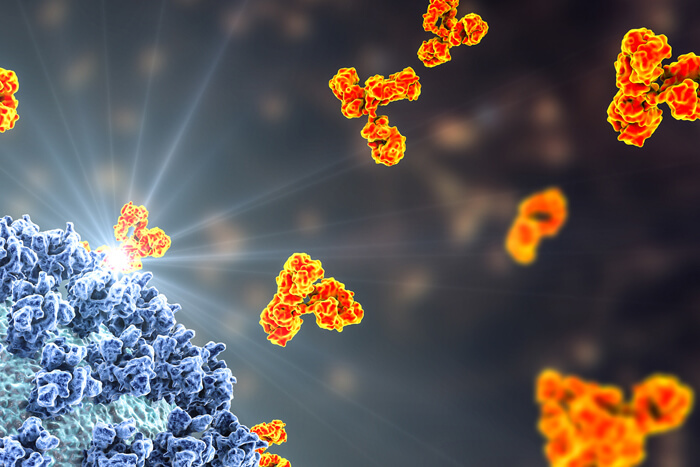Knowledge-Driven Rapid Analytics for New Molecular Format Protein Therapeutics
To address unmet medical needs, increasing number of new molecular format (NMF) protein therapeutics with a lack of immunoglobin domain are in various phases of development.
In the pipelines of the biotech industry, NMF protein products have overtaken monoclonal antibodies (mAbs or mAb) as the major class of medicines in development. Due to the unusual physicochemical properties of these artificially designed molecules, it is not always feasible to leverage mAb platform processes or analytics for speedy chemistry, manufacturing, and controls (CMC) development. To meet the challenge of speed from development to clinic, an early, rapid, product-specific development method is critical.
Rapid Analytics Development Should be Based on Understanding of the Molecule, Predicted Product-Related Impurities, and Potential Critical Quality Attributes
 Due to the difference between NMF proteins and classic mAbs, an analytical platform approach may not be suitable,
and hence product-specific methods need to be established. The development of these methods needs to be based on the understanding of the molecule and the product, such as:
Due to the difference between NMF proteins and classic mAbs, an analytical platform approach may not be suitable,
and hence product-specific methods need to be established. The development of these methods needs to be based on the understanding of the molecule and the product, such as:
- Molecule design and potential product-related impurities
- Primary sequence and high-order structure liability
- Predicted physicochemical properties
- Initial manufacturing process design
- Anticipated excipients
- Primary package of drug product
Especially in the early stage of development, such as primary sequence optimization, developability assessment, vector design, cell line construction, clone selection, and cell line stability studies, having a lack of information about the molecule’s physicochemical and biological properties is normal. Prior knowledge of protein chemistry and analytics, in combination with the projected potential critical quality attributes (CQAs) of the product, provide important guidance for early analytical development. A few examples could demonstrate this.
Suppose Protein A or Protein L highly specific affinity chromatography is not applicable. In that case, other appropriate immunological or physicochemical assays, such as enzyme-linked immunosorbent assay (ELISA) or reverse-phase high-performance liquid chromatography (RP-HPLC) methods, will need to be developed for titer measurement. Especially for difficult-to-express molecules with low titer, highly selective titer methods are essential for accurate measurement due to the matrix interference of host cell proteins (HCPs). In the worst scenarios we encountered, the concentration of HCPs was up to 10 times higher than the product protein concentration in the harvest cell culture fluid (HCCF). For multiple chain bi- and/or multi-specific molecules with the presence of disassembly impurities, a suitable chain pairing method is needed for vector design and clone selection. For molecules liable to fragmentation and/or aggregation, a size variants analysis method with adequate resolution, such as size exclusion ultra/high-performance liquid chromatography (SE-U/HPLC), is required for process and product development.
In addition, when monitoring the molecule’s homogeneity, a chromatographic or electrophoretic method for charge variants analysis and intact mass spectrometric (MS) methods for protein isoform analysis is warranted.
Design of Experiments and Automation Enable Rapid Analytics Development Following an Analytical Quality-by-Design Strategy
Speed to the clinic requires the development of an automated high-throughput method. In the early phase of CMC development, analytical development starts with predicting appropriate product/process-specific assays. Generally, rapid method development, according to the analytical quality-by-design (aQbD) approach, can be defined as the following stages:
- The definition of analytical target profile (ATP)
- Evaluation and selection of fit-for-purpose analytical techniques
- Initial pilot method parameter screening
- Characterization and optimization of the key method operating parameters and their interactions on the method performance
- Confirmation of method performance with typical sample analysis
The various stages of method development are usually structured by the formal design of experiment (DoE) and with the aid of statistical software. The DoE software can also facilitate the interpretation of the effect of method parameters and their interactions on method performance, culminating with establishing statistically valid mathematical models. The obtained statistical models are essential to define the design space of the method. As a project progresses to later phase development (prior to process performance qualification), the DoE strategy can also be applied to method validation with its distinct advantage of generating maximum and meaningful data with the minimum number of experiments. Methods developed and validated according to the aQbD strategy, with the aid of DoE software, not only have the benefits of time and resource-saving but are also likely to be more robust and rugged than methods developed by the traditional one-factor-at-a-time (OFAT) approach.
Rapid Development of Physicochemical, Immunological, and Cell-Based Assays, Structured by Design of Experiments and Accelerated with Automation
For most immunological and physicochemical assays, post definition of ATP and selection of analytical techniques, a three-stage rapid method development approach should be considered:
- Stage 1. Initial screening to select a promising procedure based on understanding of the molecule and the process/product requirement.
- Stage 2. Characterization/optimization of the analytical procedure with DoE strategy aimed at understanding the main method parameters and their impact on method performance and defining the desirable operational ranges.
- Stage 3. Confirmation of the method performance with representative samples and matrices before method qualification or validation.
The initial experiment could be performed on a 384-well plate with a liquid-handling robotic system for immunoassay methods, such as ELISA. This system is equipped with automation software to screen the coating and detection of antibody/antigen pairs, assay format, and critical reagents. After reviewing the initial screening experimental results, the first round of DoE experiments could be planned for characterization/optimization of the critical reagent concentrations, the main parameters’ operational ranges, and their potential interactions. Depending on the results, a second round of DoEs may be needed for further optimization of key method parameters. The final stage of immunoassay development should be devoted to confirming analytical performance with representative real samples in their corresponding matrices.
For physicochemical method development, such as chromatography and electrophoresis, due to the difference in principle of separation and method-specific requirement of ATP, selecting the appropriate separation mode decides the key method parameters to screen in the initial experiments. For example, for U/HPLC method development, the initial experiment is usually devoted to choosing a column and workable mobile phase based on understanding the molecule, the matrix components, and process/product development requirements. The U/HPLC systems, with multi-column switching and multi-mobile phase choice functions, can be utilized for rapid method development. These systems enable automatic high throughput screening with minimum human interaction. The initial screening experiments identify a workable column and mobile phase for further method development and optimization following the DoE strategy. The planned experiments can be performed overnight or during the weekend without human supervision.
Mechanism of action and reflective cell-based assay are usually employed for potency analysis in protein therapeutics development. Establishing cell banks is required for CBA development if appropriate thaw-and-go cells are not commercially available. This results in a long development time and is often on the critical path of a CMC program. Once a workable procedure has been established through primary screening experiments, a DoE approach can also be adopted for efficient and effective cell-based potency assay development, optimization, and validation.
Conclusion
The key regulatory requirement in the early stage of drug development is to ensure patient safety. Rapid analytical method development is desirable for speed to clinic with limited resources. In cost-efficient CMC development, a phase-appropriate strategy is generally followed in method development, qualification, and validation to support process and product development. Platform methods are available for classic mAb development. NMF protein therapeutics require more product-specific methods for CMC development. It becomes more important to strike a delicate balance between speed to clinic, resource commitment, and regulatory compliance. An integrated strategy with the application of prior knowledge, science, and risk-based aQbD approach combined with the use of automation enables rapid analytics development within an aggressive timeline and often with limited available resources.



